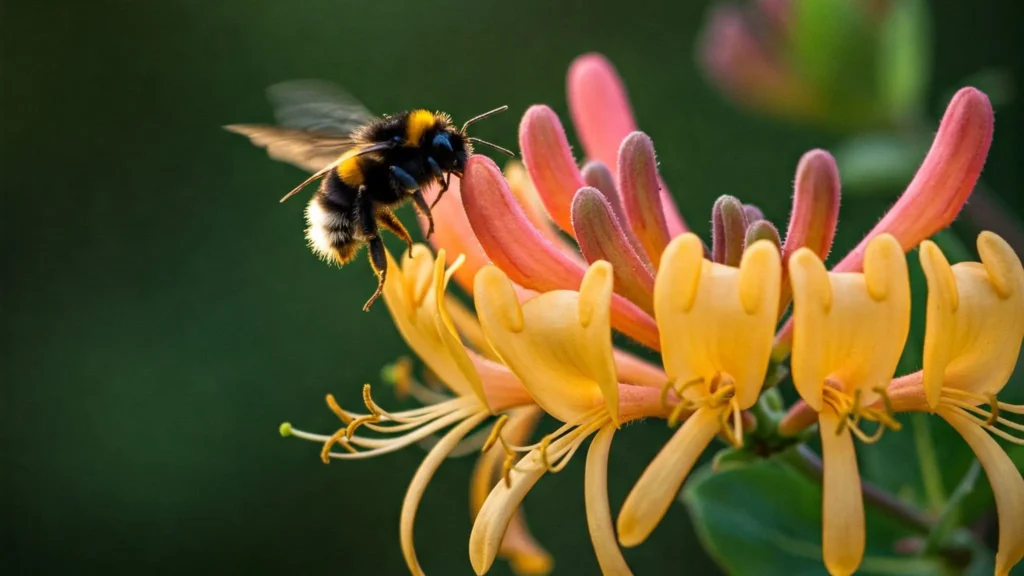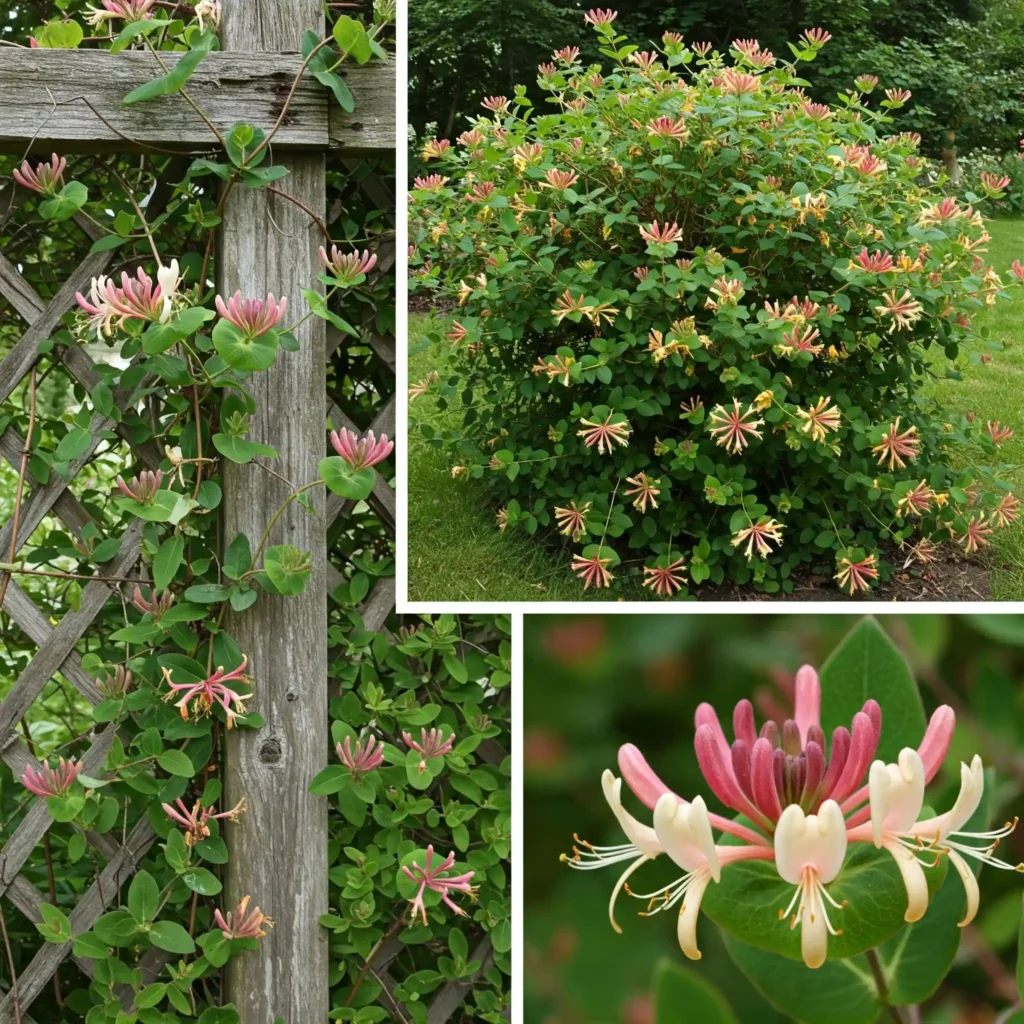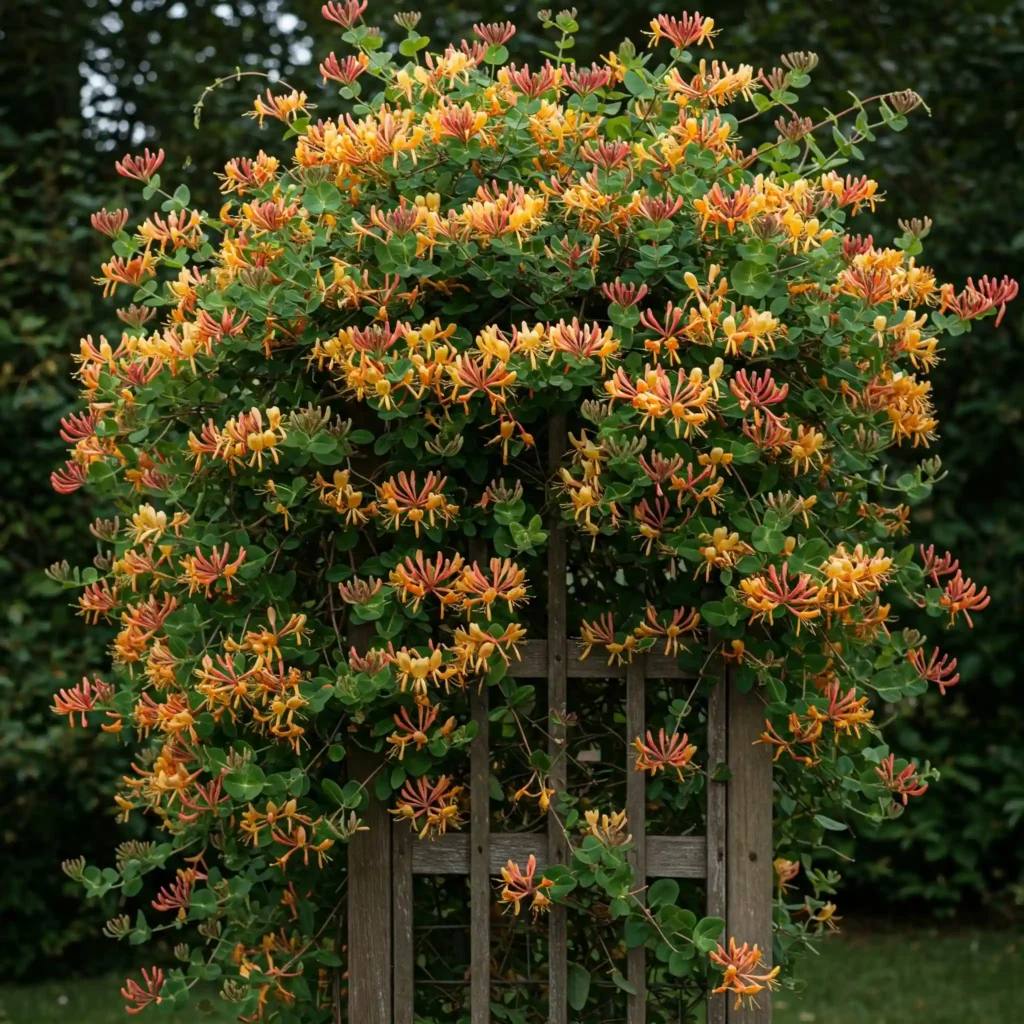Planting Honeysuckle: Is This the Easiest Way to Add Fragrance to Your Garden?
Imagine walking into your garden on a sunny summer evening and the air smelling delicately and seductively. That is the honeysuckle’s magic! Gardeners especially love this lovely, often vining plant because of its exquisite flowers, wonderful perfume, and capacity to draw hummingbirds and butterflies. Still, you could be thinking, “how to plant honeysuckle?” It’s rather simple. The secret is to choose the right site, till the ground is ready and offer enough support for climbing variants. This will set your plant’s starting environment in good shape.
Honeysuckle Has Various Advantages Beyond Only Its Appealing Scent and Attractiveness
Once grown, this low-maintenance plant offers a vivid burst of color and draws helpful animals to your yard. honeysuckle may change your outdoor area whether your goal is of a lovely shrub on a border or a fragrant cascade of blooms over an arbor.
From choosing the ideal honeysuckle variety for your needs to giving continuous care to guarantee it flourishes for years to come, this complete guide will walk you through every stage of the process. We will go over everything, including appropriate type, best timing for planting, basic care advice, and even how to fix typical issues. Thus, get ready to release in your own yard the beauty and scent of honeysuckle! We will assist to create a piece of cake for the planting of honeysuckle process.
Selecting the Correct Variety of Honeysuckle
You have to realize that not all honeysuckles are made equal before you even grab a shovel. The first and maybe most crucial step toward success is choosing the appropriate type for your garden and area. Usually falling into two main types—vining and shrub varieties—each having unique traits and growing patterns—honeysuckles fall in both You also have to take very significant consideration on if a variety invasions your area.
Vining Honeysuckles
Typically with twining stems and typically strongly fragrant blossoms, these are the traditional climbing honeysuckles. Covering walls, fences, arbors, or trellies, they provide a lovely, cottage-garden impression. Typical instances include:
- Especially in the evening, this European native lonicera periclymenum (Woodbine or Common Honeysuckle) has creamy-yellow to pinkish blossoms with a rich, sweet scent.
- Although lovely and somewhat fragrant, lonicera japonica (Japanese honeysuckle) should be avoided in many areas of North America since this species is quite invasive even with white blossoms fading to yellow. It can rapidly upset ecosystems and outcompete native species.
Shrub Honeysuckles
These honeysuckles have the busier, more compact growth pattern that their name suggests. Usually employed as stand-alone shrubs or for hedges and foundation plants, they are Among examples are:
- Bloming in late winter to early spring, lonicera fragrantissima, sometimes known as Winter Honeysuckle, is a semi-evergreen shrub with tiny, creamy-white blossoms with an immensely strong, lemon-like scent.
- Another shrub honeysuckle with pink or white blooms and red berries is lonicera tatarica, sometimes known as Tatarian Honeysuckle. But L. tatarica is also regarded as invasive in many places, hence before planting, be sure local rules apply, much as with Japanese honeysuckle.
Invasive vs. Non-Invasive Honeysuckles: a Crucial Difference
Choosing a honeysuckle requires this arguably most important consideration. Although the appeal of scented blossoms is great, introducing an invasive species could have major negative effects on your neighborhood. Particularly Japanese Honeysuckle (Lonicera japonica) and other shrub honeysuckles like Tatarian Honeysuckle (Lonicera tatarica) and Amur Honeysuckle (Lonicera maackii), invading honeysuckles can quickly suffocate local flora and upset ecosystems.
We strongly advise selecting either native or non-invasive honeysuckle cultivars. These are some outstanding, non-invasive choices:
- One cultivar of Lonicera periclymenum, “Scentsation” honeysuckle is distinguished by its very intense, sweet scent and yellow blossoms.
- Long bloom duration and vivid pink and yellow blooms define “Goldflame” Honeysuckle (Lonicera x heckrottii).
- Native North American vine Major Wheeler’s honeysuckle (Lonicera sempervirens) has gorgeous red, trumpet-shaped blossoms especially appealing to hummingbirds. Though it smells little to nothing, its non-invasive character and beauty make it a top pick.
- From spring till frost, virtually all year in warmer locations, “Alabama Crimson” Honeysuckle (Lonicera sempervirens) blooms coral, almost red, trumpet-shaped flowers.
Flower Colors and Scent
White, yellow, pink, red, and orange are just a few of the hues available in honeysuckle blossoms. Though many are noted for their sweet, heavy aroma, generally most strong in the evening, the fragrance differs between species and cultivars. When selecting a variety, take into account the scent profile you like as well as the appearance.
To find out which species are regarded as invasive in your particular area, contact your local extension office or a reliable native plant group before beginning any honeysuckle planting. A list of invading plants by state is available at https://www.invasiveplantatlas.org/. This will guarantee your selection is ethical and ecologically friendly.
A Comprehensive Guide on the Best Method of Planting Honeysuckle
It’s time for planting once you have selected the ideal honeysuckle kind! This detailed advice will make sure your honeysuckle starts strong, therefore preparing the ground for years of lovely blossoms and aromatic enjoyment.
When Should You Plant?
Whether you are planting a bare-root or container-grown honeysuckle and your environment will determine the best time to plant them.
- Most areas find that spring—after the last frost—is a great time to plant. This lets the plant set its root system before summer’s heat.
- Fall: Particularly in mild winters, fall planting—at least six weeks before the first severe freeze—is also ideal. This lets the roots grow before the plant goes dormant.
Container-Grown vs. Bare-Root
Usually available late winter or early spring, bare-root honeysuckles should be planted right away following purchase. As long as the ground isn’t frozen, container-grown honeysuckles give additional flexibility and can be planted all during the growing season.
Location Selection
Success of your honeysuckle depends on choosing the correct site. Take these things into account:
- Sunlight: Most honeysuckles grow in full sun, hence for best flowering they need at least six hours of direct sunshine every day. Some kinds, especially some shrub honeysuckles, may withstand some partial shade (4–6 hours of sunlight), but flowering may be diminished.
- Soil: Honeysuckles hence favor well-drained, fertile soil. To boost drainage and aeration from thick clay soil, add compost, aged manure, or other organic matter. Organic matter added to assist retain moisture can also aid sandy soils.
- Space: Think on the mature scale of the honeysuckle variety you have selected. Vining forms can be somewhat big and call for plenty of room for climbing. Shrub forms also require space for spread. See the plant label for particular spacing suggestions.
- Support (for Vining Types): If you are growing a vining honeysuckle, offer a strong support system—such as a trellis, arbor, fence, or wall. Support should be in place before planting to prevent subsequent disturbance of the roots.
Planting Guidelines
These guidelines will help you to plant honeysuckles successfully:
- Dig a hole around twice the width of your honeysuckle’s root ball and exactly the depth. This gives the roots lots of room to expand.
- Get ready for the roots. Take the honeysuckle gently out of their container. Carefully release the tightly circular roots of the root ball (pot-bound) using your fingers or a small garden tool. This drives the roots to spread outward into the nearby ground.
- Orient the honeysuckle in the middle of the hole such that the top of the root ball is level with the surrounding earth. Planting too shallow can expose the roots; planting too deep can cause stem rot.
- Fill the hole with the modified dirt you removed earlier, then carefully firm it around the roots to reduce air pockets. Steer clear of too tightly compacting the ground.
- Water the honeysuckle deeply and gently to moisten the root zone following planting. This promotes root development and aids in soil settling.
- Around the base of the plant, spread a 2–3 inch layer of organic mulch—such as shredded bark, wood chips, or compost. To stop rot and let air flow, keep the mulch a few inches from the stem. Mulch controls soil temperature, helps to retain moisture, and fights weeds.
- Guide the stems of vining honeysuckles gently toward the support structure. Usually vining honeysuckles will start to climb on their own, but you may have to use twine or plant ties to fast fasten them initially.
Care for Honeysuckle Following Planting
Planting your honeysuckle is just the first step. Your plant will flourish and reward you with many of blossoms and scent only if you provide correct continuous maintenance. This is a handbook on mulching, watering, fertilizing, trimming, pest and disease control.
Regarding Watering
- First Year: A robust root system depends on regular watering throughout the first growing season. Particularly in dry conditions, water often and deeply. Try to keep the ground regularly moist but avoid waterlogging.
- Known Plants: Once planted, honeysuckles tolerate drought rather well. They will still, however, gain from sporadic deep watering, especially in extended hot, dry conditions.
- Main Idea: Deep and rare: Watering deeply and less frequently is preferable than shallowly and regularly. Deep watering helps the roots to reach further, therefore strengthening the plant’s drought resistance. Steer clear of overwatering if you want root rot avoided. The “finger test” is a nice approach to evaluate the ground. If it’s dry, it’s time to water; stick a finger in the ground up to the second knuckle.
In Fertilizing
- Apply a slow-release, balanced granular fertilizer in early spring, just as fresh growth first appears. For the growing season, this supplies vital nutrients. Usually appropriate is a 10-10-10 or equivalent balanced fertilizer.
- Apply the fertilizer around the base of the plant, spreading out to the drip line—that is, the area just under the outer circumference of the branches. After fertilizing, completely wash water.
- Steer clear of over-fertilizing since too much fertilizer could cause too much green growth at the price of blooms. Closely follow the packaging directions.
Pruning Is
Maintaining the form and size of your honeysuckle, stimulating strong development, and encouraging plenty of flowering depend on pruning.
- Time: Prune vining honeysuckles right away following blossoming. This lets you appreciate the blossoms and then help the plant to be shaped before it produces buds for the next year.
- Approach: Eliminate any crossed, dead, or broken branches. Thin packed development to increase air circulation. To shape and size the vine, you can also cut back long, messy stems.
- Prune shrub honeysuckles in late winter or early spring before fresh development starts.
- Approach: Eliminate any crossed, dead, or broken branches. Trimming older stems helps to promote fresh development from the base. Selective cutting back branches will help you shape the shrub to keep the intended form and size.
Mulching Calls for
Around the base of your honeysuckle, a layer of organic mulch—such as shredded bark, wood chips, or compost—offers several advantages.
- Mulch helps the soil retain moisture, therefore lowering the demand for regular watering.
- Mulch limits weed development, thereby lessening of the competition for nutrients and water.
- Mulch insulates the ground, therefore shielding the roots from significant temperature swings.
- Organic mulch thus increases the nutrients in the soil as it breaks down.
- Apply a two to three inch layer, keeping several inches separating the mulch from the stems of the plant.
- Take a look how to Improve Soil Health for Outdoor Plants and unlock Your Garden’s Potential!
Pest and Disease Management
Usually hardy plants, honeysuckles can occasionally be impacted by pests and diseases.
- Common pests include aphids, tiny, sap-sucking insects that gather on fresh growth and flower buds. Treat them with a vigorous water spray, insecticidal soap, or neem oil.
- Honeysuckles The larvae of sawflies skeletonize the leaves beginning at their margins.
- Typical Diseases:
- A white, powdery covering on leaves, powdery mildew is a fungus. Boost airflow and steer clear of overhead irrigation. If called for, apply a fungicide.
- Organic Approach of Control: Choose organic methods of pest and disease control wherever at all feasible, including:
- Choosing pests by hand: Handpicking insects can be rather successful for minor infestations.
- Beneficial bugs: Promote helpful aphid-eating beneficial insects such ladybugs and lacewings.
- One natural fungicide and pesticide is neem oil.
- Against soft-bodied insects like aphids, insecticidal soap works well.
- 3 Simple & Natural Ways to Keep Pests Away from Your Garden
Finish
Growing honeysuckle is a gratifying and surprisingly simple hobby as we have discussed throughout this text. From the first thrill of selecting the ideal type to the gratification of seeing it flourish, honeysuckle presents a wonderful experience for gardeners of all stripes. To review the main lessons learned toward success:
- Variability Selection is Essential: The most important initial step is selecting a non-invasive honeysuckle variety fit for your location, environment, and aesthetic taste. Keep in mind the mature size, sunlight needs, and preferred form—vining or shrub. Most significantly, too, steer clear of invading species!
- Correct planting technique sets the scene. Giving your honeysuckle a well-prepared planting hole, lots of sunlight, well-drained soil, and suitable support (for vining kinds) will guarantee a good start. Recall the easy steps: dig a large hole, loosen the roots, plant at the proper depth, backfill, water thoroughly, and mulch.
- Continuous care guarantees long-term success. Maintaining a robust and vivid honeysuckle mostly depends on regular watering (particularly in the first year), annual feeding in early spring, and correct trimming. Look for typical pests and diseases; when you can, use organic solutions right away.
As We Have Demonstrated, Responding to the Question, “How to Plant Honeysuckle?” is Easier Than Many Would Believe
This amazing plant will readily be beautiful and fragrant in your own garden with enough preparation and maintenance. Among the benefits that await you are the delicious aroma floating through the air, the vivid colors draw hummingbirds and butterflies, and the rich greenery creates peace.
Then, don’t hesitate! Seize the chance to include this interesting flora into your scene. You’ll be happy with either a small, shrubby type to accentuate a border or a fragrant, vining honeysuckle to climb a trellis. Growing honeysuckle can bring delight and a conection to the natural world.
Frequently Asked Questions (FAQ) on Honeysuckle
Can I Grow Honeysuckle Indoors?
Although honeysuckle grows best outside, indoor growing is usually not advised. It calls for lots of sunlight, sufficient air circulation, and often a challenging to imitate indoor winter dormancy. Success and growth are far more likely in an outdoor environment.
My Honeysuckle is Blooming, But the Fragrance is Weak. From What Could Be the Origin?
Fragrance intensity can be influenced in several ways. The common offender is inadequate sunlight; most honeysuckles require at least six hours of direct sunlight for best aroma generation. Stress from poor pruning, nutrition shortages, or dryness can also lessen scent. At last, certain types are naturally more fragrant than others.
Can I Propagate Honeysuckle from Seed Collected from a Hybrid Cultivar?
Try, but the new plants probably won’t be accurate copies of the parent plant. Usually the product of cross-breeding many kinds, hybrid cultivars have seeds that could generate varied traits. Maintaining the features of a given cultivar depends more on propagation by cuttings or division.
Are Honeysuckle Berries Edible?
The species determines much the edibility of honeysuckle berries. While some honeysuckle berries are thought to be edible—though not particularly palatable—others are rather poisonous and cause gastrointestinal trouble. Unless you are quite positive of the species and its edibility, it is advisable not to eat honeysuckle berries. Rather than looking for fruit, concentrate on appreciating the blooms and drawing in wildlife.
How Can I Train My Vining Honeysuckle to Grow in a Specific Direction?
Key is frequent instruction. Gently thread the young shoots in the intended direction as they develop across the support structure—trellis, arbor, etc.? Soft plant ties or twine will help you to securely fasten them; avoid tying them too tightly, as this can limit development. Pruning also helps to guide development; cut out undesired branches to promote development in the target areas.
My Honeysuckle Leaves Have Holes in Them, But I Don’t See Any Pests. From What Could Be Producing This?
Apart from obvious insects, several elements could lead to holes in honeysuckle leaves. Many times feeding at night, slugs and snails leave ragged edges or holes behind. Some kinds of caterpillars could potentially be the offender. Less typically, fungal diseases can occasionally produce leaf patches that finally collapse and leave holes. If you suspect those pests, closely inspect the plant including the undersides of leaves and think about placing slug traps.
Is Honeysuckle Deer Resistant?
Though an extremely hungry deer could attempt it, it is said to be resistant.
Will Honeysuckle Grow on a Brick Wall?
Although vining honeysuckle can be grown on a brick wall, it’s crucial to choose the correct kind and offer support. Some honeysuckles climb by twining stems, which call for a trellis or wires to grab onto. Others, with adhesive tendrils, are not advised for brick walls since with time the tendrils may compromise the mortar. Installing a trellis a few inches from the wall will help to prevent possible harm by allowing air flow.
Can I Grow Two Different Types of Honeysuckle Together?
Indeed, you may grow several honeysuckle varieties—that is, ones with varying colors.
How Long Will My Honeysuckle Live?
Many honeysuckles are rather long lived—between 10 and 20 years—with the right care.





